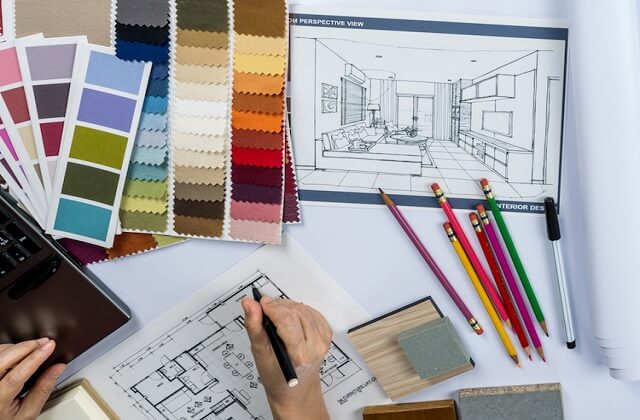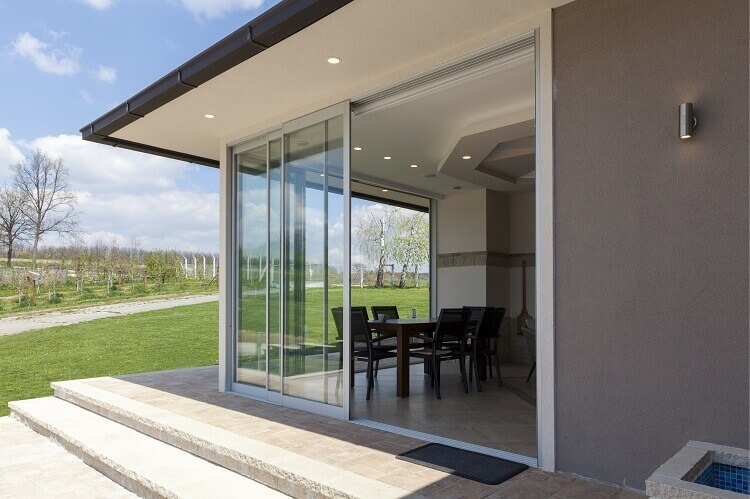Content Attributes
Interior designing is a rapidly growing industry that is essential in shaping and transforming spaces into functional and aesthetically pleasing environments. If you have an eye for design and a passion for creating beautiful and functional spaces, then a career in interior design might be the perfect fit for you. However, to excel in this field, you will need the necessary skills, knowledge, and education. In this blog post, we will discuss the pros and cons of interior designing courses to help you make an informed decision about pursuing a career in this field.
Benefits of Interior Designing Courses

Interior design is an exciting and dynamic field that offers numerous career opportunities. Pursuing a course in interior design can provide a wide range of benefits, both professionally and personally. In this blog post, we will discuss some of the benefits of interior designing courses.
Develops Creativity:
These courses encourage students to develop their creativity and imagination. Through assignments, projects, and internships, students are exposed to a variety of design styles, materials, and color palettes. This exposure helps students to develop their unique style and perspective.
Enhances Problem-
Solving Skills: Interior designing requires critical thinking and problem-solving skills to overcome design challenges. Interior designing courses offer students the opportunity to learn how to analyze and solve design problems creatively. These skills are transferable to other areas of life, such as personal relationships and decision-making.
Provides Technical Skills:
This provides students with technical skills, such as computer-aided design (CAD), 3D modeling, and lighting design. These technical skills are essential in creating designs that are both functional and aesthetically pleasing.
Offers Hands-On Experience:
Interior designing courses provide students with hands-on experience through internships, design projects, and collaborations. These opportunities allow students to apply the knowledge and skills learned in the classroom to real-world situations. Additionally, these experiences can help students build their portfolios, which is essential in the job market.
Expands Career Opportunities:
Interior designing courses offer numerous career opportunities in various fields, such as residential, commercial, hospitality, and healthcare design. Additionally, These can provide the skills and knowledge necessary to start a business or work as a freelance designer.
Provides Industry Connections:
These courses offer students the opportunity to connect with industry professionals through guest lectures, networking events, and internships. These connections can provide students with valuable mentorship, job opportunities, and industry insights.
Improves Communication Skills:
Interior designing requires effective communication skills to collaborate with clients, contractors, and other professionals in the industry. Interior designing courses offer students the opportunity to improve their communication skills through presentations, critiques, and group projects.
Fosters Personal Growth:
Pursuing a course in interior design can help students to develop personally and professionally. Interior designing courses encourage students to think creatively, communicate effectively, and problem-solve. Additionally, These exposes students to a diverse range of cultures and perspectives, promoting personal growth and empathy.
Pros of Interior Designing Courses:

- Develops Skills and Knowledge: Interior designing courses provide students with a comprehensive understanding of the industry, including design principles, color theory, space planning, and construction materials. These courses will help you develop the skills and knowledge necessary to create unique and functional spaces that meet your client’s needs and preferences.
- Enhances Creativity: Interior designing courses encourage students to think creatively and outside the box when designing spaces. You will learn how to use color, texture, and patterns to create a visually stunning space that is both functional and comfortable. By taking these courses, you will enhance your creativity and develop a unique style that sets you apart from other designers.
- Increases Job Opportunities: Completing an interior designing course can increase your chances of landing a job in the industry. Many employers prefer hiring designers with formal education and training. Additionally, having a degree or certificate in interior design can help you negotiate a higher salary and advance your career.
- Builds a Professional Network: Interior designing courses provide students with the opportunity to meet and network with other professionals in the industry. By building relationships with other designers, architects, and contractors, you can gain valuable insights and contacts that can help you in your career.
- Provides Hands-on Experience: Many interior designing courses offer hands-on experiences, such as internships and design projects. This allows students to apply the knowledge they have learned in the classroom and gain practical experience working on real-world projects. Hands-on experience is essential in building a portfolio and gaining credibility as a designer.
Cons of Interior Designing Courses:

- Cost: Interior designing courses can be expensive, and the cost of tuition and materials can add up quickly. Additionally, some courses may require you to purchase specialized equipment or software, which can be costly.
- Time-Consuming: This requires a significant amount of time and dedication. Many programs are full-time, and students are expected to complete assignments and projects outside of class hours. If you are working or have other commitments, balancing your time may be challenging.
- Limited Flexibility: These courses typically have a set schedule, and students are expected to attend classes regularly. This may be difficult if you have other commitments or live far from the school. Additionally, online courses may not provide the same level of interaction and hands-on experience as in-person courses.
- Limited Job Opportunities: While completing an interior designing course can increase your job opportunities, the industry is highly competitive, and jobs may be limited in certain areas. Additionally, many employers prefer hiring designers with experience, which can make it difficult for recent graduates to find work.
- No Guarantee of Success: Completing an interior designing course does not guarantee success in the industry. You will need to work hard, build a portfolio, and gain experience to establish yourself as a reputable designer. Additionally, the industry is constantly evolving, and you will need to keep up with the latest trends and techniques to remain competitive.
Points to Remember While Choosing Interior Courses

Choosing the right interior designing course can be a challenging task, especially with so many options available today. Interior designing is an exciting and dynamic field that requires creativity, knowledge, and skills to create functional and aesthetically pleasing spaces. If you are considering pursuing a career in interior design, it is essential to choose a course that fits your needs and goals. In this blog post, we will discuss some points to remember while choosing internal design courses.
Accreditation and Reputation of the Institution:
One of the most important factors to consider when choosing an interior designing course is the accreditation and reputation of the institution. Accreditation ensures that the course meets certain standards and is recognized by industry professionals. Additionally, researching the institution’s reputation and reviews can give you an idea of the quality of education and resources offered.
Curriculum and Course Content:
It is important to carefully review the curriculum and course content of the interior designing course. The course should cover the fundamental principles of interior design, including color theory, space planning, materials, and design software. Additionally, the course should offer hands-on experiences, such as internships and design projects, to apply the knowledge learned in the classroom.
Faculty and Staff Expertise:
The faculty and staff of the institution play a significant role in the quality of education provided. It is essential to research the credentials and experience of the faculty and staff members. Experienced professionals in the industry can provide valuable insights and mentorship to students.
Course Duration and Flexibility:
Interior designing courses vary in duration, ranging from a few months to several years. It is essential to consider the course duration and flexibility to balance your time and other commitments. Additionally, online courses may provide more flexibility, but it is important to ensure that they offer the same level of interaction and hands-on experience as in-person courses.
Cost and Financial Aid:
The cost of interior designing courses can vary significantly, depending on the institution and course duration. It is important to consider the cost and financial aid options available, such as scholarships, grants, and loans. Additionally, it is important to consider the potential return on investment in terms of job opportunities and salary.
Industry Connections and Networking Opportunities:
Interior designing courses that offer industry connections and networking opportunities can be beneficial in establishing a career in the industry. Internships, design projects, and guest lectures can provide students with valuable connections and mentorship from industry professionals.
Location and Access to Resources:
The location of the institution and access to resources, such as design software, equipment, and materials, are important factors to consider. Additionally, institutions located in urban areas may provide more opportunities for internships and job opportunities.
Specialization and Electives:
Interior designing courses may offer specializations or electives that cater to specific areas of the industry, such as residential or commercial design. It is important to consider your interests and goals and choose a course that offers electives or specializations that align with your career aspirations.
In conclusion
Choosing the right interior designing course is crucial in pursuing a successful career in the industry. By considering the factors mentioned above, you can make an informed decision and choose a course that fits your needs and goals. Remember to research and compare multiple institutions and courses to find the best fit for you. With the right education, skills, and experience, you can excel in the dynamic and exciting field of interior design.
Also Read:
- All About The Perks Of STEM Learning In Australia
- Learn Interior Design Course From The Reputed Institute
- Tips to choose the best interior designing company for your home
- How your Office Interior Design affects Employee Productivity?
- How To Achieve Your Vision Of Interior Design



